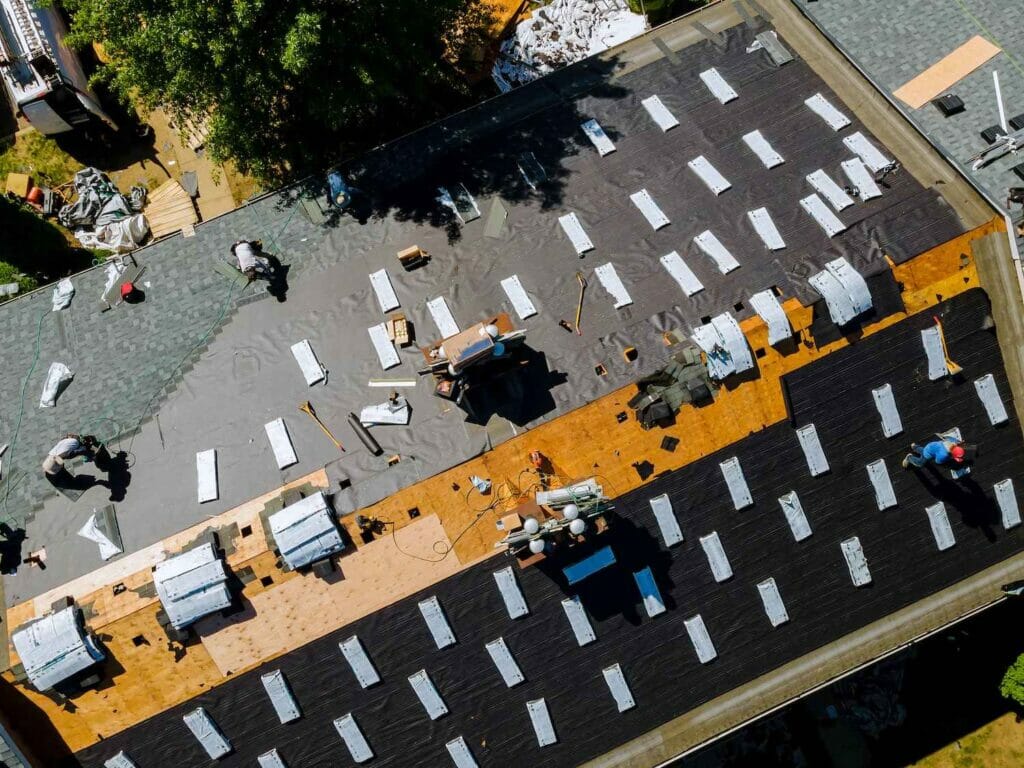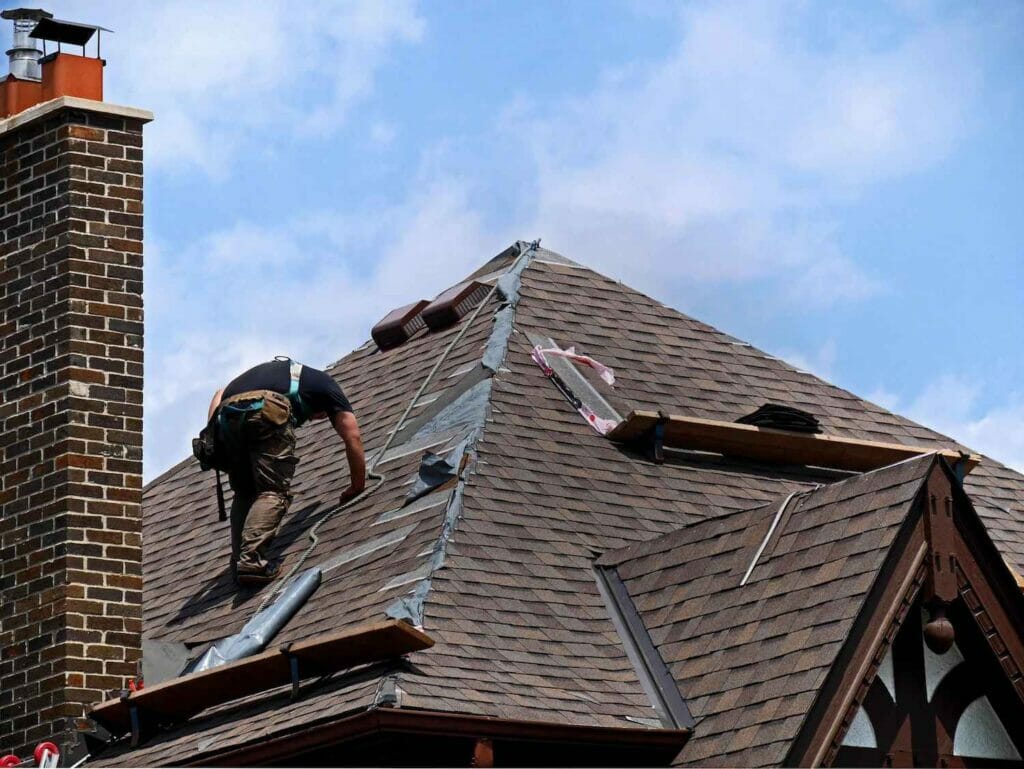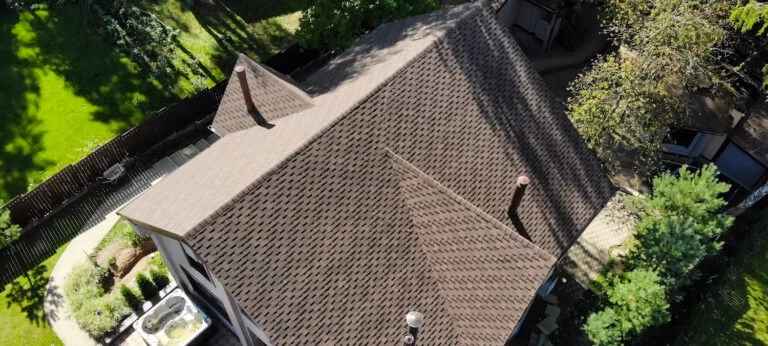Replacing a roof is a large project, almost all of which takes place outside on top of your house. So what is the best time to replace a roof? Are some seasons better than others?
The answer is a strong yes. Depending on the climate you live in, there are particular times of year you should schedule your appointment with a roofing contractor.
Most roofing contractors agree that early to mid-fall is the best time to replace your roof. This tie of year offers almost ideal working conditions and increases the chances of the installation going smoothly!
Keep reading to learn the pros and cons of getting your roof replaced in each season and how this applies to various regions in the US.
BEST TIME TO REPLACE ROOF
Below details the busy seasons, slow seasons, and more concerning roofing installation.
REPLACING IN WINTER
Winter is not the best time to get your roof repaired unless you live in a very mild climate with warmer winters. Winter temperatures and precipitation make it dangerous for roofers to work on new shingles. Winter weather is unpredictable, and there is limited daylight, meaning the roofing project would take longer than normal.
The longer the project takes, the more likely weather affect the shingles. Also, shingles can crack when installed under super cold temperatures. The upside if you get your roof replaced in the harsh winter is that many roofing companies will likely have an open and flexible schedule.
While winter roof installation is ill-advised, it can be done in an emergency. Winter is the worst time for roof work, but it’s also the most important time to have a quality roof.
Pros
- Roofers are in slow season
- More affordable
Cons
- Damaged roofing materials and tools
- Unsafe working conditions
- Unpredictable and harsh weather conditions
- Freezing temperatures
Ideal Regions
- Southern states
- California
Worst Regions
- Northeast states
- Midwest states
- Rocky Mountain states
REPLACING IN FALL

Fall is the most popular time for roof replacements and also the best season for it. The downside is that it can be difficult to schedule a roofing appointment in the fall if you don’t plan ahead.
Autumn days are still long at the start of the season, offering longer hours of daylight for workers to complete the project quickly. The summer heat dies down at the beginning of fall, but the cold weather and winter temperatures haven’t crept in just yet.
Winter season is also around the corner, and you must have a stable roof before the snow starts to fall. While some people think spring is the optimal time, fall is far better because there is less rain and low yet mild temperatures. To avoid scheduling issues, always try to make your roof replacement appointment months in advance to ensure you get a slot in autumn.
Pros
- Consistent weather
- Mild temperatures
- More daylight
- Ideal temperature for materials and tools
Cons
- Higher prices
- Limited experienced roofing contractor availability
Ideal Regions
- Most regions in the US
Worst Regions
- Northeast states
- Northwest states
REPLACING IN SPRING
Many people assume spring is the ideal time to get roof replacements because the sun is shining and the temperature is more comfortable. However, spring weather can be unpredictable concerning precipitation and high temperatures. Spring typically has the highest levels of rainfall compared to other seasons, which can cause unsafe and slippery conditions for roof workers.
Despite this, roof replacement is super common in springtime, but appointments and projects can be delayed due to rain, inconveniencing many homeowners and roofing contractors and extending the project’s duration.
But if you notice issues or damage in the spring, it’s best to make an appointment as soon as possible so you can get the replacement scheduled before the summer heat. Sometimes the heat comes earlier than expected, which happens more and more as the years pass. If you schedule an appointment in mid to late spring, the sun produces high heat warping asphalt shingles or making it hard for roofing tools to function.
Pros
- Milder and cooler temperatures
- Longer daylight
- Low humidity
- Clear weather
Cons
- Experienced roofing contractors are in busy season
- Most popular season
- Heavy rainfall
- Unpredictable temperatures
Ideal Regions
- Midwest states
- Rocky Mountain states
Worst Regions
- Southern states
- Northeast states
- Northwest states
REPLACING IN SUMMER

Some people think summer is ideal for home maintenance because the days are long and mostly sunny. But up on an asphalt roof, workers can experience extreme heat, making roof maintenance and replacement dangerous and difficult.
Depending on the climate you live in, the beginning of summer can be a suitable time for roof replacement. Places that don’t experience super hot summers can schedule their roof replacement in early summer. Getting an appointment around this time is typically easier than getting one in the spring or fall, making it a desirable window.
A large factor in summer roof replacement is the humidity level. Hihg humidity can cause the shingles not to adhere properly. Mountainous regions and the midwest states often have low humidity, even at the peak of summer, making roof installation easier. But coastal regions can have 90% humidity, which can easily warp the roofing shingles and impair the functionality of certain roofing tools.
Unlike spring, summer does have more predictable weather conditions, so precipitation is less of a concern. When it comes to summer season roof installation, temperature and humidity are the main focus.
Pros
- Longest daylight
- Predictable weather conditions
- Low precipitation
- Roof installers are less busy
Cons
- Extreme heat
- Extreme weather
- High humidity
- Compromised materials and tools
Ideal Regions
- Pacific coastal states
- Northeast states
Worst Regions
- Southern states
- Southwest
- midwest
SIGNS YOU NEED TO REPLACE YOUR ROOF
As mentioned, it’s best to make your roofing appointment far in advance so you can choose the ideal season. It’s good to know the signs you need to replace your roof so you can identify them early and prevent an emergency. Below are a few reasons you should think about planning ahead or calling a roofing consultant to make a roof repair or replacement appointment:
- Buckling shingles
- Leaks
- Missing shingles
- Sagging spots
- Damage or discoloration
- Mold or mildew growth
HOW OFTEN YOU NEED TO REPLACE YOUR ROOF
A new roof should stay in good condition for 12-30 years, depending on the materials. So making a roof installation appointment should not be a regular occurrence. But roofs require maintenance still! So roof costs shouldn’t be a consistent problem.
BOTTOM LINE
If you need home improvement immediately, most roofing companies and most contractors will oblige no matter the season. But to make your life easier and ensure your roofs are installed under ideal conditions, try to make your appointments in the fall. During this season, weather cooperates more, thermal sealing works better, and shingles ar more likely to seal effectively.



